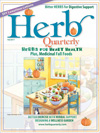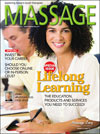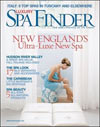By Deborah Flanagan
As a Reiki practitioner, I’ve noticed many subtle yet powerful changes in my life since I took my first Reiki class. However, one of the shifts I noticed a little more concretely, and which especially intrigued me, was the effect it had on my creativity. Funny to use the words creativity and concretely all tied up together with Reiki, but that’s what made it interesting and made me want to examine the effect of Reiki on creativity in this article. I explore types of creativity, how letting go and sacred play can aid your efforts, and how Reiki ties in with all of this.
“I’m not particularly creative, what does this have to do with me?”
I would make a case that how you live your life is a creative pursuit and practicing the system of Reiki is, too. One of my all-time favorite quotes expresses this perfectly:
Let the beauty we love be what we do. There are hundreds of ways to kneel and kiss the ground. –Rumi
So whether you refer to yourself as an artist, or you’re a Reiki student or practitioner, or you strive to live your life with imagination and an openness to new ideas, I would argue that Reiki and creativity can apply to just about everyone.
Reiki and the creative process
I dwell in possibility. –Emily Dickinson
Back to the concrete shift I noticed several years ago. As a poet, I would experience deep dread whenever it came time to sit in front of the computer and write a poem. Part of me really felt drawn to this activity, of course, but the other part was dragged, kicking and screaming. I was brilliant at procrastinating and would get tons of other things done on my “To Do” list (at least I was productive), anything to avoid writing.
As I began practicing the system of Reiki I stopped trying to force the poems to come; I’d tell my “Monkey Mind” to hold off and I’d sort it out later. And I would. I’d write without thinking and then let the poem marinate for a day or so, only then allowing my thinking mind to finally be involved. And usually the draft wouldn’t be as crazy and bad as I thought it would be.
Reiki helped soften my resistance to letting go and letting something higher than me shine through. Over time I noticed I worried less about making the right or wrong choices, my “Monkey Mind” quieted down so I could simply explore and wonder/wander as I connected with my intuition. Overall, there was much less dread, procrastination, and self-sabotage, and the poems started to flow more easily. This isn’t to say, of course, that I don’t need to edit and rewrite and sometimes ditch a draft entirely, but it was remarkably less painful and I began to really focus on that beautiful feeling of being in the flow and being connected to something greater and larger than myself, which is the whole reason I write in the first place.
I asked one of my long-time clients, a visual artist, if she noticed anything different in her creative process since she started receiving Reiki sessions:
“For the next couple of weeks following each session, I would find that ideas would float into my consciousness more regularly and effortlessly, which is not typical. It was a very subtle and inexplicable shift. Everyone’s creative process is different—just like some people need to work in front of the TV while others need the complete silence of a library—for me, it’s unusual to have this level of creative openness when immersed in my day-to-day life. In fact, it usually only happens when I’m away at a residency.
Once I started getting Reiki sessions I noticed that during the quiet times of my day, new ideas would often come to mind. They weren't Eureka moments for fully-conceived works, more like grains that I’d end up pursuing in more depth later.”
Bronwen Stiene, co-founder with Frans Stiene of the
International House of Reiki, put it this way: "By bringing about balance through the practice of the system of Reiki, creativity is no longer hampered by self-doubt or a “monkey” mind. The artist becomes free to explore the universe from a grounded and unlimited standpoint."
Creativity as letting go
When I let go of what I am, I become what I might be. —Lao Tzu
As a result of this and other experiences, I always explain Reiki to my first-time clients this way: “You know when there’s something you really want—a goal, or a challenge to overcome, etc.? And even though you want it, even though it’s a positive thing, you can sometimes feel in your body where you hold some resistance to it? Maybe because change can be a little scary, maybe because it stretches you to expand, but from whatever place that this resistance is coming from, Reiki can be very effective at softening and helping you let go of it and connect to your true, best self.” Reiki can help you feel comfortable with risk, by softening resistance and allowing you to be open to possibility.
Mark Silver, founder of
Heart of Business, and a business consultant and healer, talks about this idea of getting out of your own way—the idea that when someone does their best work it’s often as if they’re absent, “they kind of open their heart and things come through.” He’s experienced it himself: “you know it’s like somebody asks me a question or I’m in front of a group or client and I’m able to absent myself and whoosh….something comes through and I’m taking notes as fast as anybody. It’s like I got out of the way and I just became the vessel.”
This getting out of your own way and letting go also happens whenever you give a Reiki session—since we’re not sure exactly how it works and you don’t consciously decide where the energy should go—so in and of itself practicing Reiki can be a first step to helping us let go in other areas of our lives.
Creativity as sacred play
Frans and Bronwen Stiene interviewed Siobhan McLeod, an Australian artist who discovered her own levels of creativity broadened and deepened after she began studying Reiki. Her work went in several new directions—instead of written journals she started creating visual journals of things that excited and inspired her, and she started doing fabric art and making jewelry. Siobhan found using the Reiki meditations and mantras became a process for her to use to clear her head, “The Reiki exercises calmed me down enough to allow new things to come through….and creativity became a form of sacred play.”
Reiki can be a vehicle that opens you to possibilities in art and all areas of your life. And exploring and working with the other components of the system of Reiki—the precepts, meditations, doing daily self-care, and giving and receiving sessions is a way to express that commitment to being open.
Similar to Siobhan, I found chanting the Reiki mantras/symbols (a meditation which I initially couldn’t stand, surprisingly) connected me incredibly quickly to my ideal creative head space in only 5 or 10 minutes. We both found we’re able to use the visual arts and writing poetry respectively, as a meditative practice.
In his interview with Siobhan, Frans takes it a step further, making the observation that she is able to integrate the system of Reiki into her daily life and her art in a way that goes beyond only using it for hands-on-healing and suggests that individuals might “feel a kick start of healing through viewing her artwork.”
Siobhan offers some great ideas to cultivate your inner creativity through Reiki and art (here’s the link to the
full interview as well as a
Creative Suggestions page on her website.)
Your creative input
I have found over and over through my personal experience, as well as those of my clients and fellow practitioners, that the system of Reiki can help us get out of our own way and let our unique light shine through in whatever creative way we personally express it.
Reiki can help you gain clarity, tap into your intuition, and discover your inner wisdom. It enables us to open up to the possibilities and potential in our lives, and isn’t this what creativity is at heart? Reiki can help us think about our lives in a totally different way, from a broader perspective, and connect with our core essence.
I’d love to hear if other people have had similar or different experiences, as well as to hear your ideas on how we can enhance our lives with Reiki and thinking creatively.
Deborah Flanagan has a private Reiki and reflexology practice in New York City. She also works with patients at the Initiative for Women with Disabilities, part of NYU Langone Medical Center, and previously offered Reiki in the hospice ward at Beth Israel Medical Center. Her poetry has been published in various journals, including The Gettysburg Review, FIELD, and DIAGRAM.





















































